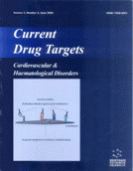Abstract
Dysfunction of the endothelium in large- and medium-sized arteries plays a central role in atherogenesis. The insulin resistance syndrome encompasses more than a subnormal response to insulinmediated glucose disposal. Patients with this syndrome also frequently display elevated blood pressure, hyperlipidemia, and dysfibinolysis, even without any clinically manifested alteration in plasma glucose concentrations. Of note endothelial dysfunction and atherosclerosis also have been demonstrated in patients with hypertension, which is one of the features of the syndrome of insulin resistance. Insulin-induced vasodilation, which is mediated by the release of nitric oxide (NO) release, is impaired in obese individuals who display insulin resistance. Although it is tempting to speculate that loss of endothelium-dependent vasodilation and increased vasoconstriction might be etiological factors of elevated blood pressure, the factors contributing to NO-mediated endothelial dysfunction in the insulin-resistant state are not fully defined. Experimental evidences suggest that (6R)-5,6,7,8-tetrahydrobiopterin (BH4), the natural and essential cofactor of NO synthases (NOS), plays a crucial role not only in increasing the rate of NO generation by NOS but also in controlling the formation of superoxide anion (O2 -) in the endothelial cells. Under insulin-resistant conditions where BH4 levels are suboptimal, in addition to a reduced synthesis of NO, an accelerated inactivation of NO by O2 - within the vascular wall was observed. Furthermore, oral supplementation of BH4 restored endothelial function and relieved oxidative tissue damage, through activation of eNOS in the aorta of insulin-resistant rats. These results indicate that abnormal pteridine metabolism contributes to causing endothelial dysfunction and the enhancement of vascular oxidative stress in the insulin-resistant state.
Keywords: insulin resistance, tetrahydrobiopterin, dihydrobiopterin, endothelial dysfunction, hypertension, atherosclerosis, oxidative stress, nitric oxide, endothelial nitric oxide synthase, oxygen free radical
 18
18













